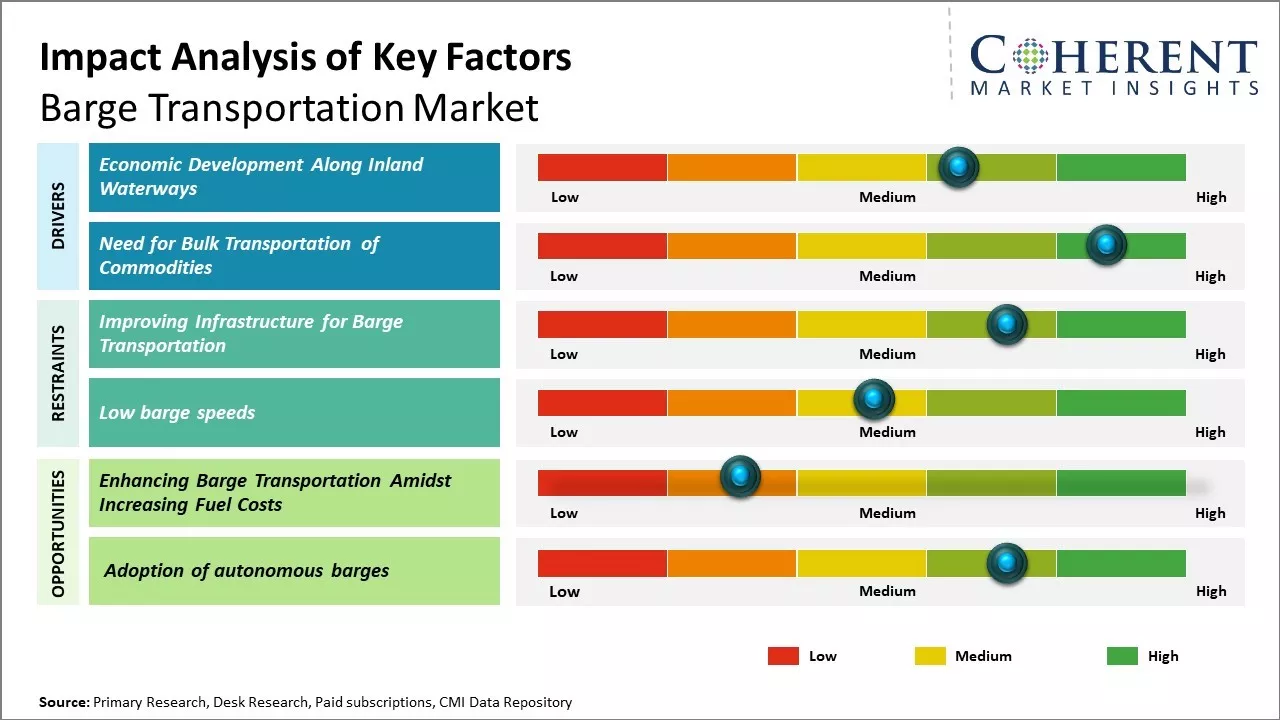Global barge transportation market is estimated to be valued at US$ 141.33 Bn in 2025, and is expectedto reach US$ 184.85 Bn by 2032, exhibiting a compound annual growth rate (CAGR) of 3.9% from 2025 to 2032.

To learn more about this report, Request sample copy
Barge transportation provides a economical mode of transportation for cargo and operates on inland waterways, rivers, oceans, and coastal routes. There has been an increase in usage of barges to transport cargo in bulk such as coal, crude petroleum, chemicals and agriculture products.
Global barge transportation market is expected to witness growth due to increasing demand for cost effective and fuel efficient modes of transportation. For a long time, barges have been the go-to choice for transporting large amounts of goods over extended distances, especially along rivers and coastal areas. However, players in the market are now focusing on expanding barge fleet sizes and capabilities to transport project cargo and containerized freight. This is expected to drive volumes and provide opportunities for operators to diversify end markets.
Market Drivers: Economic Development Along Inland Waterways
The inland waterways across major economies have been witnessing increased investments toward development. Rivers and canals that connect different regions have been used for transportation of cargo. However, many waterways especially in developing nations had inadequate infrastructure and ports. In recent years, governments have launched ambitious programs to upgrade existing facilities and build new mechanisms that expand the reach of barge transportation networks. This is helping industries to leverage inland shipping as a more viable option.
Countries like the U.S., China and India have substantially ramped up spending on projects that dredge rivers to increase draft, construct locks and install modern loading docks. New special economic zones are being established next to important inland ports to promote local manufacturing and trade. Some nations have also introduced tax benefits and subsidies for a certain period of time to promote greater utilization of domestic waterways. As infrastructure qualitatively improves along major inland routes, the cost of barge transportation is decreasing relative to other modes. Industries are able to ship heavier consignments over longer distances at competitive freight rates.
This state support for waterway logistics is stimulating more economic activity across inland regions. Business around cargo transfer points like ports and logistics hubs are flourishing. Agricultural and industrial clusters are developing in adjacency to take advantage of egress to national as well as international export markets using inland shipping. Regions that were previously less connected due to geographical challenges are being integrated better into domestic commercial corridors. New opportunities are opening up for local enterprises to participate in supply chains as producers and suppliers. This leads to increased employment and incomes along with the rise of ancillary barge terminal services across many inland areas.
Joining thousands of companies around the world committed to making the Excellent Business Solutions.
View All Our Clients